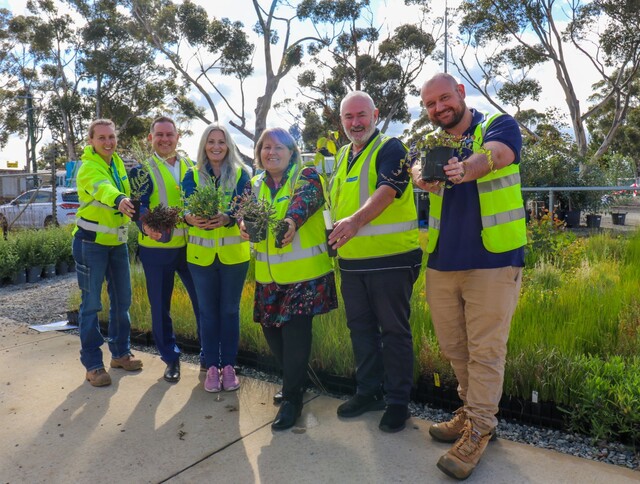The Good Oil by Rod Brown*
Federal Departments are now searching around for ideas for inclusion in New Policy Proposals for next year’s Budget. This NPP process, concluded around February to March each year, is critical for Deputy PM Anderson. His beloved Nationals are not travelling well, with the next Federal election less than 12 months away and his Department of Transport and Regional Services (DOTARS) is bereft of funds. He will thus be desperate to get Cabinet agreement to significant funding for Auslink – the proposed national integrated transport strategy. He must, and should, succeed for the following reasons.
- The nation’s infrastructure cannot be solely funded by the private sector – it simply will not happen in regional areas with low population.
- Jobs depend on investment, and investment depends on quality hard and soft infrastructure.
- The Nationals need solid agendas in the run up to the next election.
- The Prime Minister reportedly talked John Anderson out of retiring – so there must be a quid pro quo for Anderson.
- Treasury/Finance has lost enormous credibility with the revelation of a $7 billion surplus hot on the heels of austerity laden talk from the Treasurer.
It is thus crucial for regional Australia that the Nationals run these arguments and play hard ball in the Budget lead up.
Part of the armoury that the Deputy PM and DOTARS will use to win Budget funding is the Keniry Report, commissioned by the government and released in August 2003 (see www.rbda.gov.au). It deals with the growth of regional business, and follows a year of research and discussions by an independent panel, chaired by Dr John Keniry, the chairman of the Ridley Corporation.
The Keniry Report’s main recommendations are as follows.
Investment and capital
- Develop a small business financing program.
- Pilot a revolving loan fund program in some of the Sustainable Regions Program areas.
- Governments to ensure specialist support services are available to regional small businesses.
- Promote the positive features of regional Australia, such as investment opportunities and lifestyle advantages.
- Introduce a pilot business angel investment program.
High level taskforce
- Each region to have a body responsible for achieving long term regional planning outcomes that lead to business development and growth, and delivery of government services.
- Develop a mechanism through which Commonwealth funding can be used to leverage a greater level of strategic coordination among various bodies involved in regional planning and development.
Competitive advantage
- The Regional Development Council (new COAG body) to prepare an information brief on benchmarking for regional bodies involved in preparing long term regional economic plans.
- Some tightening of the Zonal Tax Rebate Scheme.
- Regions to pursue regional marketing strategies that focus on attracting skilled people and creating the right investment climate, identify skill shortages, make better use of business migration initiatives.
- Detailed research into the potential benefits of providing regionally based incentive payments over and above the existing First Home Owners Scheme.
- Regional Development Council to develop a framework that links existing Commonwealth and state leadership programs to provide a more effective network for the development of leaders in regional communities.
Prioritisation of major infrastructure projects unlikely to attract private sector investment.
- Establish an independent national advisory group, to advise the COAG on priorities for infrastructure development, based on connectivity between regions and national and global markets.
- Development of a regional infrastructure bond market.
As you can see, many of the recommendations deal with frameworks and mechanisms, and the overall tenor is ‘steady as she goes’ compared with a number of the submissions to the Keniry Report.
Enterprise Zones
The submission by Mike Turner from Tasmania, director of 16 companies in regional Australia, argued that the answer to regional growth lies in encouraging the establishment of new enterprises biased towards manufacturing, with high end product potential to export markets. Such enterprises ‘pull’ innovation and new work skills with support enterprises into a region thereby instigating the economic multiplier effect.
Where this critical mass and synergy can be developed, growth is ensured by the networking and allied support services and it attracts further enterprises. He says that ‘arguably the most powerful incentive to attract new business start ups is that used by foreign countries – company taxation breaks for five to ten years which enhances the establishment years’.
Turner’s slightly interventionist talk would certainly scare the horses in Canberra, so it was no surprise that the Keniry report said ‘We found that the application of enterprise zones was neither the most desirable nor most efficient way of generating or revitalising regional business growth. Overseas evaluations suggest they divert rather than create real wealth’. This is not a view held by all. Worldwide experience indicates that enterprise zones can be effective in marshalling investment even without tax breaks, because they provide a framework and commitment to deliver quality infrastructure.
In fact, enterprise zones could fit very well with the Auslink initiative.
Value chains
The submission by Spiller, Gibbins & Swan (SGS) argued for emphasis on understanding the supplier buyer linkages (or value chains) within a region, often from the major regional exporters and then working backwards. Locating a new company in a region will only be successful if it integrates well into the value chain requirements of the region.
SGS said that Europe tends to focus on the relationship between cities and their hinterlands, with city regions playing knowledge intense, brokerage roles, while the hinterland regions play more production and logistical roles. Each specialises in their components of the overall value chain. In combination they produce competitive, wealth generating goods and services.
The SGS submission argues for not only a conducive and stable business environment, but also a high quality ‘hard’ infrastructure base and a collaborative and highly skilled ‘soft’ infrastructure base. It notes, inter alia, the following roles.
- Commercialisation, research and entrepreneurial capacities in the region, backed up with building regional networks to ensure that knowledge and technology transfer is maximised and the innovation process is institutionalised.
- Strategically targeted financial incentives, which may take the form of ‘seed’ grants, tax incentives and so forth.
- Public-private sector partnerships that espouse a commonly held vision and priorities for facilitating new business investment.
Governance structures
Deniliquin Council argued that those regions with bigger budgets and competent staff are the winners. Governments listen to those that are making it happen, and Councils need to have all the resources. This viewpoint was partly picked up by Keniry’s recommendation that each region should have a body responsible for achieving long term regional planning outcomes.
However, as emphasised before in this column, better training and career paths for regional development practitioners, together with putting regional stakeholders closer to external decision making processes, are crucial to balanced national development. The realisation of Auslink would certainly be easier if regional development practitioners around Australia were part of the process.
In conclusion, we should all be hoping that the Deputy PM kicks a few goals with Auslink in coming months – it has the potential to chart new territory in economic development.
* Rod Brown’s Canberra based consultancy group, Australian Project Developments Pty Ltd, specialises in industry/regional development and government liaison. For further information telephone (02) 6231 7261 or email apd@orac.net.au







